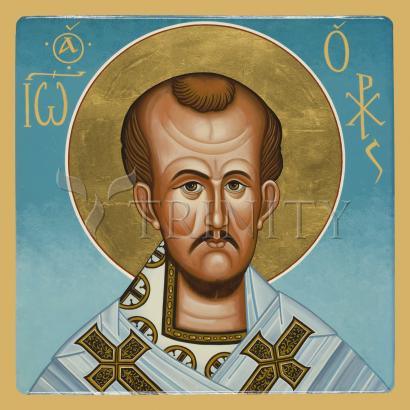Collection: St. John Chrysostom

-
Sale
Wood Plaque Premium
Regular price From $99.95 USDRegular priceUnit price per$111.06 USDSale price From $99.95 USDSale -
Sale
Wood Plaque
Regular price From $34.95 USDRegular priceUnit price per$38.83 USDSale price From $34.95 USDSale -
Sale
Wall Frame Espresso
Regular price From $109.95 USDRegular priceUnit price per$122.17 USDSale price From $109.95 USDSale -
Sale
Wall Frame Gold
Regular price From $109.95 USDRegular priceUnit price per$122.17 USDSale price From $109.95 USDSale -
Sale
Wall Frame Black
Regular price From $109.95 USDRegular priceUnit price per$122.17 USDSale price From $109.95 USDSale -
Sale
Canvas Print
Regular price From $84.95 USDRegular priceUnit price per$94.39 USDSale price From $84.95 USDSale -
Sale
Metal Print
Regular price From $84.95 USDRegular priceUnit price per$94.39 USDSale price From $84.95 USDSale -
Sale
Acrylic Print
Regular price From $94.95 USDRegular priceUnit price per$105.50 USDSale price From $94.95 USDSale -
Sale
Giclée Print
Regular price From $19.95 USDRegular priceUnit price per$22.17 USDSale price From $19.95 USDSale -
Custom Text Note Card
Regular price From $300.00 USDRegular priceUnit price per$333.33 USDSale price From $300.00 USDSale
ARTIST: Joan Cole
ARTWORK NARRATIVE:
When you are before the altar where Christ reposes, you ought no longer to think that you are amongst men; but believe that there are troops of angels and archangels standing by you, and trembling with respect before the sovereign Master of Heaven and earth. Therefore, when you are in church, be there in silence, fear, and veneration.
–Saint John Chrysostom
His feast day is September 13.
- Art Collection:
-
Saints And Angels
- Patronage:
-
Against Epilepsy,
-
Lecturers,
-
Preachers,
-
Speakers
St. John, named Chrysostom (golden-mouthed) on account of his eloquence, came into the world of Christian parents, about the year 344, in the city of Antioch. His mother, at the age of 20, was a model of virtue. He studied rhetoric under Libanius, a pagan, the most famous orator of the age.
In 374, he began to lead the life of an anchorite in the mountains near Antioch, but in 386 the poor state of his health forced him to return to Antioch, where he was ordained a priest.
In 398, he was elevated to the See of Constantinople and became one of the greatest lights of the Church. But he had enemies in high places and some were ecclesiastics, not the least being Theophilus, Patriarch of Alexandria, who repented of this before he died. His most powerful enemy, however, was the empress Eudoxia, who was offended by the apostolic freedom of his discourses. Several accusations were brought against him in a pseudo-council, and he was sent into exile.
In the midst of his sufferings, like the apostle, St. Paul, whom he so greatly admired, he found the greatest peace and happiness. He had the consolation of knowing that the Pope remained his friend, and did for him what lay in his power. His enemies were not satisfied with the sufferings he had already endured, and they banished him still further, to Pythius, at the very extremity of the Empire. He died on his way there on September 14, 407.


















